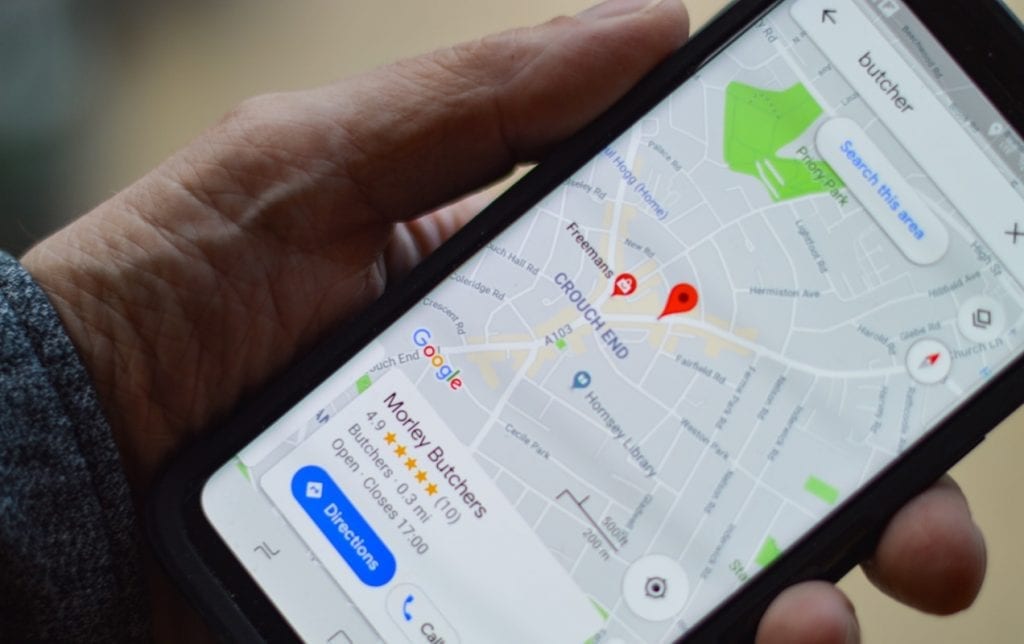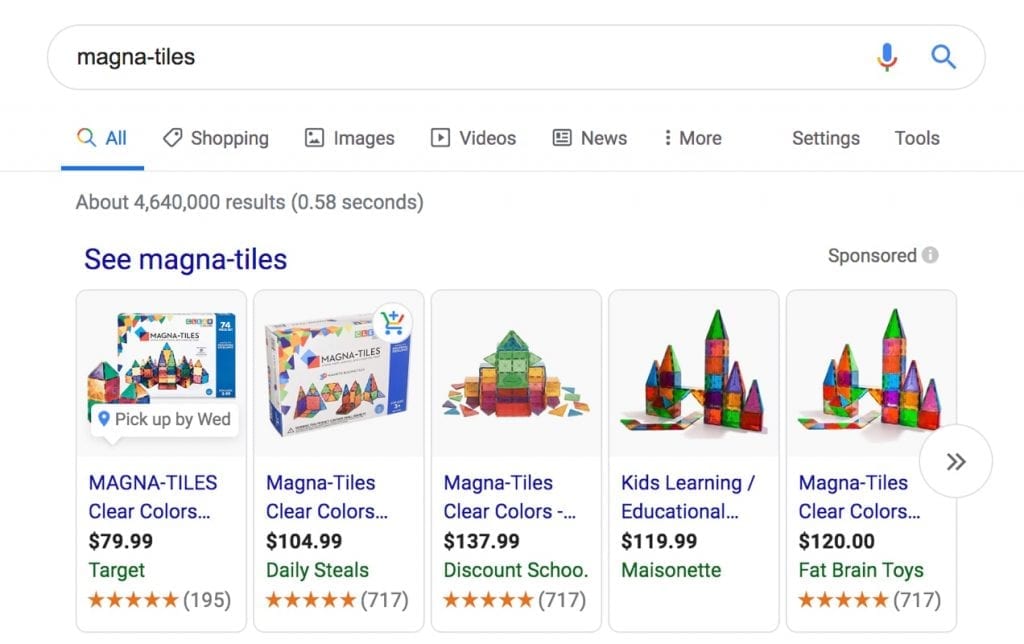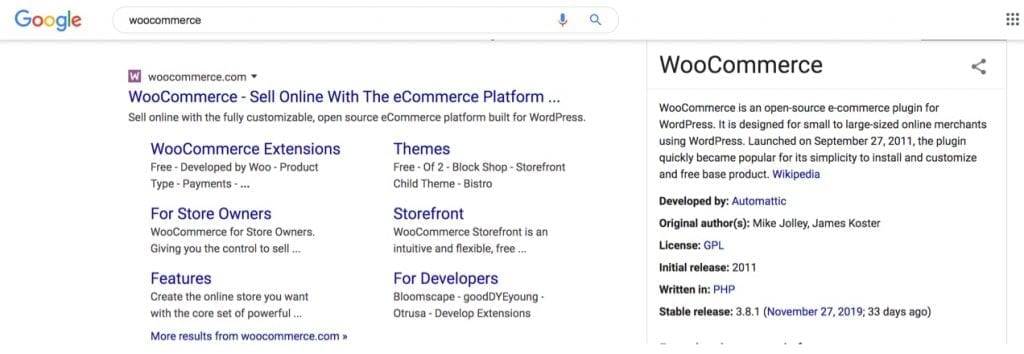eCommerce stores have two basic strategies to get products found online — purchase ads or improve search rankings. The most cost-effective option is search engine optimization (SEO). While it takes time and effort to make organic search work for your business, it costs a lot less long-term than a paid ad strategy.
Successful SEO focuses on your products. Why? Because, in most cases, people who are ready to buy — the people you hope will find your site — search for the products they’re looking for. If someone is looking for facial cream, they’re not going to type “makeup” or “beauty products” into a search engine. They’ll type something like “facial cream,” “face lotion,” “skin lotion,” or “facial ointment.” For your products to show up in search results, your product pages need to be built around specific, buyer-optimized keywords related to what you sell.
Below, you’ll find specific strategies to accomplish this and help shoppers find your products through organic search. Block out time each week to work through the entire list; it will be well worth the time you invest.
Note: this guide focuses on product-based search engine optimization. For basic SEO principles, read Top Ten SEO Tips for eCommerce Stores.
1. Boost local SEO
Local SEO focuses specifically on ranking well in your geographical location. Whether you have a physical store or only sell online, nearly every business is tied to a local community in some way. You may use local supply chains, offer an in-person service or special delivery option, or sell perishable products to certain ZIP codes. A massage clinic that offers services and sells products online needs strong local SEO in order to show up in search results for its ideal customers — people nearby who need massages.

A few ways to improve your local SEO include:
- Claim your Google My Business page. This is the first and easiest step, because it literally puts you on the map — Google Maps.
- Include location-specific keywords on your site in page titles, meta descriptions, image alt text, and URLs.
- Write blog posts specifically focused on your location.
Suppose you ship dog bowls nationwide, but your base is in Atlanta and you want to become known as an Atlanta-area business. In addition to claiming your Google page, you might:
- Put a photo of your facility on your About page and write, “The Atlanta production site where we make dog bowls” as the alt text.
- Include the word “Atlanta” in your About page URL and meta description.
- Make the page title for your About page “Atlanta’s Best Source for Dog Bowls.”
- Write blog posts like “How We Manufacture Dog Bowls in Atlanta” or “The Best Dog Parks in Atlanta.”
Don’t overdo it! There’s no need to put your city name on every page of your site; that will feel silly and unnatural. Include it in key places where it makes contextual sense, like on your Contact page.
2. Encourage product reviews
Reviews show up in search results and impact which businesses Google chooses to display for specific queries. They also make people more likely to visit your site and purchase your products.
How do you get more reviews? Dedicate some of your marketing budget to seeking reviews from both existing and new customers. A few ways to do it:
- Send emails to your customer lists asking for reviews. Include links to make the process as easy as possible.
- When you ship products, include a flier or card asking for reviews. Again, tell them exactly where to go and how to submit a review.
- Offer an incentive like a one-time coupon or a free gift with purchase in exchange for a review. The Review for Discount extension makes this easy — when a customer leaves a review, the extension emails them a coupon code or discount.
Where should you prompt customers to leave reviews? Start with Google My Business and the product pages on your website. Ratings on Google determine the stars shown on Google Maps and the listing that appears for your business. Product reviews on your site that properly include schema markup (keep reading for details on setting this up) can boost your product page search engine rankings and increase conversion rates.
Once you’ve established yourself in those areas, you may want to try for reviews on social media platforms or industry-specific sites like Houzz.com or WeddingWire.com.
In all cases, the clearer your directions, the greater number and better quality of reviews you’ll get. You don’t want people to just click “five stars” and write nothing. You want them to describe how much they enjoy your business, service, or products. Encourage customers to write at least two sentences, but more is even better!
However you encourage reviews, don’t fake them. Fakers are found out eventually, and the negative impact on your brand could be irreparable.
3. Use keywords effectively
Pay attention to these details to maximize keyword usage and drive traffic to your product pages:
Diversify your keywords
Each product page should focus on a different keyword. If you devote multiple pages to the same keyword, you’ll compete with yourself and your search engine rankings will suffer.
If every page of your clothing eCommerce store says, “Men’s Shirts for Sale” in the title, Google may think that all of your pages sell the same thing. Give each page a specific title with applicable keywords.
Don’t stuff keywords
The goal isn’t to stuff your pages full of keywords. In other words, don’t do this:
“We have men’s dress shirts for sale. Look below for men’s dress shirts that are best for you. We have all sizes and colors of men’s dress shirts.”
See the problem? It doesn’t sound natural. Google knows how to sniff out keyword stuffing, and it can actually hurt your rankings. Don’t do it. It doesn’t work. There’s a better way:
Strategically place keywords
When appropriate, add your primary keyword to section headers, page titles, meta descriptions, URLs, alt text, and page content. And consider using a couple of variations. If your target keyword is “Texas flag t-shirt,” you might also want to include “Texas state flag t-shirt” and “Texas flag tee.”
Take advantage of headlines
There should only be one H1 tag on each page — this is how Google determines what your page is about. For product pages, this would be the product name. For category pages, this would be the category name.
Suppose you sell a specific type of sports apparel. A good category page headline would be, “USA Women’s Volleyball Jerseys.” See how specific that is? Not just volleyball jerseys — women’s volleyball. And not just women’s volleyball — USA women’s volleyball.
Compare that to the bland, lifeless headlines on far too many eCommerce product pages, like “Products” or “Volleyball Apparel.” The average person probably won’t use the word “apparel” when they search online. Instead, they’ll use words like “shirts” or “jerseys.” Don’t use industry jargon in your headlines. Use words average people – your buyers – use.
Write detailed product descriptions
A lot of product pages are way too short. Some just list the name of the product and nothing more — this is terrible for SEO.
Describe your product using terms people will search for. Again, details like shirt sizes, serving sizes, fabric types, model numbers, quality grades, and types of ingredients help buyers find your products and, ultimately, decide to purchase them.
Want more information about writing product descriptions that increase sales?
Learn how to use the art of psychology in your product descriptions.
Add keywords to all images
Every product page should have a photo. If you’re selling a book, include a picture of the cover. If you’re selling a service, add a photo of your staff in action.
You can add keywords in two places: the alt text and image name. Alt text describes the image. What is it a picture of? What is this infographic showing us? Because it’s also used by screen readers to “read” the image to those with vision impairments, make sure that alt text doesn’t simply list keywords. It should be an accurate depiction of the subject.
Also include keywords in your image names. Don’t call your image “img34546.jpg” or “product1035.gif.” Call it “womens-jersey-blue.jpg,” “8oz-yogurt-strawberry.png,” or “Nisha-personal-trainer.jpg.”
All of these small improvements make it crystal clear to Google what each of your product and category pages are selling.
4. Build product pages around keyword intent
What is keyword intent? When someone searches online, the way they phrase their search can give an indication of where they are in the buying process. Someone who types “how do I lose weight,” probably isn’t ready to buy a specific thing and may not really know what they’re looking for. But someone searching for “personal trainers near me” is clearly looking for someone to do business with. They know what they want and are actively searching.
When you create products pages, think about how the headlines, page titles, alt text, meta descriptions, and URLs correlate to search terms with high buyer intent.
The key here is specificity. The more specific you are, the more likely it is that the right buyers will find your page. Yes, this might mean including model numbers, flavors, or sizes. Your product and category pages should be that specific.
This information should appear on every product page and the most defining details should be in the product title.
5. Develop a content strategy
Google’s goal is to provide the best, most relevant content to their users. When you regularly post high-quality content that meets the needs of your audience, this shows Google that you’re an expert in your field and have a lot to offer.
In most cases, it’s best to start by providing solutions to problems and answers to questions.
- I love dairy but my doctor says I need to cut down. What can I do?
- What’s good to wear for a friend’s wedding in a hot location?
- How can I tell where my car is leaking oil?
- What kind of shoes are best for running marathons?
There is truly no limit to the number of questions people have. Your job is to figure out which ones your ideal customers are asking and how they relate to your products and services.
Take that information, write blog posts about it, and then link those posts to relevant product pages — the specific page or pages that relate to the problem you’re solving for them.
If you need help figuring out what people might be searching for, try these strategies:
- Use tools like Ubersuggest, Moz, or Google Keyword Planner.
- Listen to the questions you already get. Pay attention to support tickets, emails, and questions on social media.
- Talk to the people who work directly with customers. Depending on your business, this may be a sales representative, customer support agent, or installer.
- Use surveys to interact with your audience and learn more about what they’re looking for. You can send these surveys via email, ask questions in social media stories, or use tools like Crowdsignal directly in WordPress.
For more details, check out Yoast’s guide to keyword research.
6. Add rich snippets
Rich snippets allow you to give search engines extra detail about certain types of content — products, reviews, recipes, events, etc. — so that they better understand what your pages are about. The additional information will also show up in search results and has been shown to increase click through rates.
For example, if you search for Magna-Tiles, you’ll see a carousel of visual product listings with pricing and reviews.

You’ll also see that information like price and stock are shown in the standard search result.

If you’re an online shopper, wouldn’t you be more likely to click one of these listings than one without this valuable data? Here are a few types of rich snippets you can add to your website and some of the information you can include with each one:
- Products: Images, price, brand, availability, ratings, and reviews
- Recipes: Cooking time, nutritional value, reviews, and preparation time
- Reviews and ratings: Number of stars, rating total, and number of votes
- Videos: Thumbnail images, description, duration, and upload date
- Events: Date, event name, and venue
- Blog posts: Image, headline, publish date, and author
Of course, not all of these apply to every business, so choose which ones to focus on based on your product offerings.
To add rich snippets to your content, you can either do so manually or use a plugin like All in One Schema Rich Snippets.
7. Fixing crawl errors
Crawl errors occur when Google bots encounter issues while trying to view your content. If search engines can’t access all of your pages, products, and categories, then they won’t be indexed or show up in search results.
But how do you know if there are crawl errors? Start by setting up a Google Search Console account, which will allow you to connect directly with Google, troubleshoot any issues, and view valuable data. If you do create a new account, it may take a bit for information to populate in Search Console, so you might have to wait a few days before taking the following steps:
- Navigate to https://search.google.com/search-console.
- Select your website from the “Properties” dropdown on the left of the page.
- In the left hand menu, click Coverage.
- Under Details, you’ll see a list of any current crawl errors. Click on each one to view more information and which pages it applies to.
Here are a few common crawl errors and how to solve them:
Submitted URL has crawl issue
This error occurs when images, CSS, or Javascript aren’t loaded properly when Google tries to crawl your page and it’s typically temporary. Load the page that has the error and see if everything looks okay.
If it does, click on the URL in Google Search Console, select Inspect URL → Request Indexing. This will ask Google to load the page again. Finally, go back to the previous page and click the button that says Validate Fix. Within a few days, Google will send you an email with the results of the new crawl.
Submitted URL not found (404)
A 404 error occurs when a URL no longer exists — you may have deleted a page or changed the URL without creating a redirect. You have two options:
- If the page no longer exists and there isn’t a similar, related page, simply leave the error. Google will eventually stop trying to index the page.
- If you updated the URL or moved the content to another page, create a 301 redirect from the old URL to the new one. You can create this redirect in your .htaccess file or using a plugin.
Once you’ve fixed the error, validate the fix as mentioned above.
Server error (5xx)
This error is almost always temporary and most likely means that your site or server was down the last time Google tried to index it. Simply request indexing and validate the fix as mentioned above.
In the future, Google Search Console will email you when errors pop up, so you can fix them right away. Learn more about using Google Search Console to improve your site’s visibility.
8. Improving site structure
A good website structure leads to a good user experience. And when it comes down to it, Google prioritizes the experience of your site visitors. This is an often-overlooked area of search engine optimization but an incredibly important one, especially if you have a lot of products or blog posts. A good website structure also helps you get sitelinks on Google, so it will display several internal links underneath your primary URL.

Start by considering your overall site hierarchy. Can customers easily get from one page to another and back? A typical eCommerce hierarchy might look like:
- Home page:
- Category One
- Product One
- Product Two
- Product Three
- Category Two
- Product Four
- Product Five
- Category Three
- Product Six
- Product Seven
- Product Eight
- Category One
Then, create URLs that match this hierarchy; a product URL might be example.com/category-one/product-two. Don’t add extra words or fluff to your URLs — they should be straightforward and self-explanatory. You may also want to include any important keywords.
Build a primary menu and navigation system based on that hierarchy and consider adding breadcrumbs to pages and products so that users can quickly get back to where they started. Learn more about creating effective navigation.
Finally, use internal links to connect pages, posts, and products. Internal links help your users find related content, share information about your site hierarchy with search engines, and spread ranking power around your website. Essentially, every page on your site should link to and from another page.
9. Building backlinks
Backlinks are created when another website links to yours. Google sees them as a vote of confidence that your content has value. But not all backlinks are equal — Google doesn’t value a link from a small blog with a few hundred visitors a month as much as one from a popular site like Entrepreneur.com or WeddingWire.com.
You should never buy links, exchange links, or pay to list your site in spammy directories. These types of backlinks break Google’s link quality guidelines and can ultimately decrease site rankings. You want to build high-quality, legitimate backlinks by:
- Writing guest posts. Reach out to valuable industry sites or influencers and offer to write a free guest post in exchange for a link. Include topic ideas and describe how the content you write will benefit their audience.
- Creating high-quality, unique content. The better your content is, the more likely it will be linked to and shared on social media. Make sure that blog posts and products are helpful and useful to your audience.
- Providing valuable information for reporters. Tools like Help a Reporter Out connect journalists who need sources with experts in a variety of industries. As a source, you’ll have the opportunity to answer questions in exchange for a link to your site.
- Doing something newsworthy. Press can be a great way to get high quality links, along with valuable attention for your brand. News sources might cover a new product release, a charitable event, a giveaway, or a big award. Forbes provides a great resource for writing an effective press release.
- Engaging with your community. Get involved in local organizations, events, workshops, and charities. Make authentic connections with other businesses and build links in an honest, reciprocal manner.
Moz provides a great, in-depth guide to link building that will help your business get off on the right track.
Regularly invest time in search engine optimization
Search engine optimization is an ongoing process and does require consistent work. It’s important to regularly create content, evaluate your user experience, and stay up to date on changes to Google’s search algorithms. SEO can be a lot of work!
But when it comes down to it, a successfully-executed search engine optimization strategy is invaluable for your online store. It leads to increased website traffic from people that are actually interested in your products and, ultimately, more sales.
Relevant Links
This blog was originally published by WooCommerce and Written by Dan Magill.

